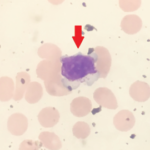“Most vertebral fractures heal within six weeks, so even with conservative treatment, there is usually complete pain relief within that time frame,” says Dr. Dore. “Doctors have jumped on the bandwagon for these procedures because they immediately relieve the pain. But we don’t yet have the data that indicates it is worth the morbidity and mortality to get a couple extra weeks of pain relief.” High levels of virtually overnight pain relief, however, are a major driver at both the doctor and patient level.
“Realistically, we don’t have a lot of treatments for the pain associated with acute vertebral fractures, and most of the options are bad,” says Dr. Mody. “Physicians are hard pressed to justify not doing the procedure when someone is in pain, the procedure is minimally invasive, and there are few bad outcomes.”
“BK does have some theoretical benefits, such as improving vertebral body height, which could improve posture,” says Dr. Smuck. “However, it still does nothing to correct sagital balance and forward stooping that results from multiple vertebral fractures. Even if it does increase vertebral body height, it doesn’t look like this translates to overall posture improvement.”
Price the Main Difference Between Procedures
The area where all three experts agree is there is a major difference is in the price of the two procedures. Most of the difference is that BK is coded as an open reduction and internal fixation procedure. This code requires that a patient be admitted to a hospital overnight before reimbursement will be approved. Therefore, BK costs about 2.5 times more than vertebroplasty.
In addition, BK requires a proprietary system that can cost up to $1,000 per patient. VP uses mainly PMMA and standard injection systems that are available off the shelf.
Another area of agreement is that prevention is much better than either procedure. “While this is a wonderful procedure that holds out hope of being very helpful, the most important treatment is to not let the fracture happen in the first place,” says Dr. Mody. “Early screening, medication, supplementation, and education will always be the mainstay of osteoporosis treatment.”
Kurt Ullman is a freelance writer based in Indiana.


